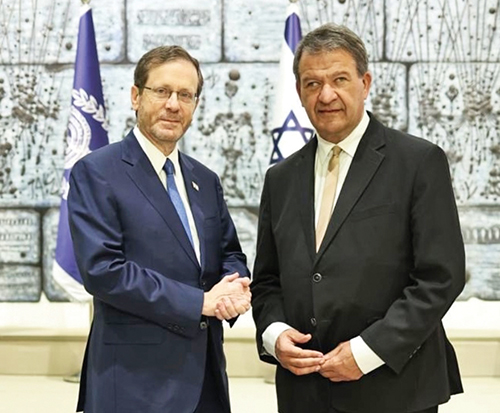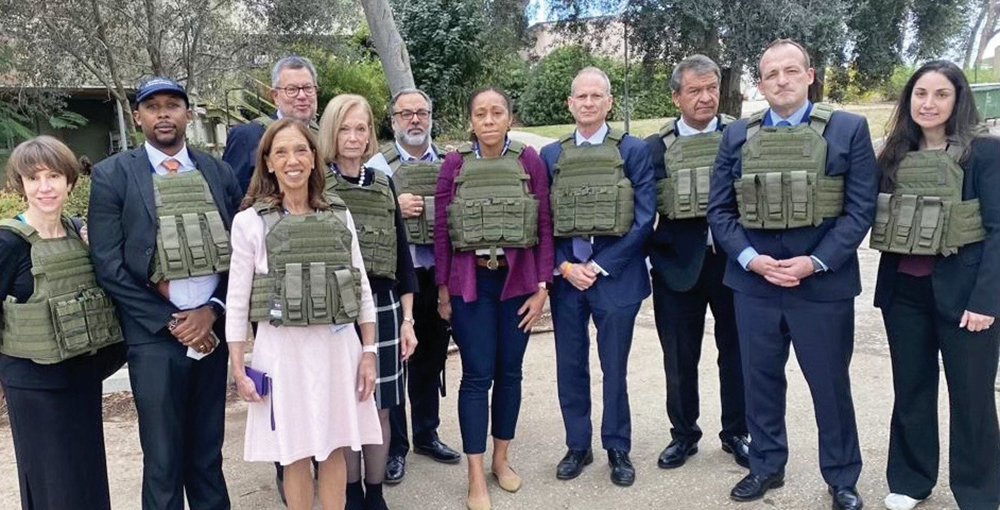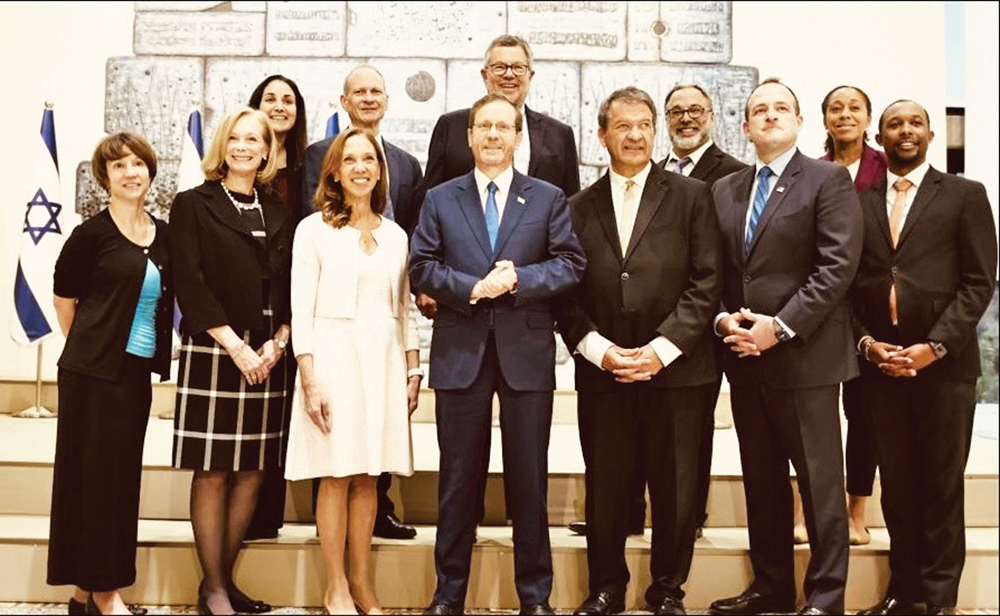
A group of Westchester County elected officials recently joined local Jewish leaders November 16-30 for an Israel solidarity mission. After Hamas’ October 7 attacks, Westchester Jewish Council’s previously planned bipartisan November nine-day trip to explore, learn and meet with both Israeli and Palestinian government officials became this solidarity mission. Westchester County Executive George Latimer served as the honorary mission chairperson.
Eight elected officials were among 12 delegates, including White Plains Common Council President Justin Brasch, Westchester County Legislature Chairman Vedat Gashi, Legislator/Majority Whip Tyrae Woodson-Samuels, Legislator Margaret Cunzio, Greenburgh Town Councilwoman Ellen Hendrickx, State Assembly member Amy Paulin, New Rochelle City Council member and Mayor-Elect Yadira Ramos-Herbert, Westchester Jewish Council (WJC) CEO Elliot Forchheimer, WJC President William Schrag, UJA’s Senior Community Mobilizer Tali Strom and Rabbi Menachem Creditor.
Participants toured Kfar Aza to view the carnage of Hamas’ barbaric acts, met with Israel’s President Isaac Herzog and MK Yair Lapid, visited wounded soldiers at Hadassah Hospital, performed volunteer activities, and met with hostages’ families. Formal Kotel and Yad Vashem programs were also included.

Latimer said: “For me, this was a sobering trip. The land of many faiths, mine and others, always compels. But hearing and understanding the psyche of the region is more important. We heard compelling voices from everyday people.”
Brasch described the mission as “the most packed period of my life; 48 hours from early morning till late night. We drove down to the border, visited Kfar Aza and got a lecture from a kibbutz member. We saw unbelievable destruction. When you walk around, you see the remnants of that Saturday morning; families were going to play with Frisbees, kitchens set up for meals, all burned and broken down, a scene from a horror movie. There are bullet holes, live bullets and dead bullets all over. We wore military-grade flak jackets; a life-changing experience. At one point during the cease-fire, there was a big boom. We didn’t know whether it was artillery or something else. ”
Brasch reflected: “It’s right on the Gaza border. You can see the Gaza fence they came through. They knew the kibbutz layout, the armory storing weapons and who was in charge in the military.”

Visiting wounded soldiers in Hadassah Hospital was particularly moving. “We sat with a badly wounded soldier who explained how he literally said Shema because he thought he was going to die,” Brasch said, noting that during the visit, the soldier’s 3-year-old daughter ran in to hug him. “With six months of rehabilitation, he’ll have a complete recovery; pretty amazing.” The soldier, speaking mostly Hebrew, detailed how once aboard the medevac helicopter, he realized he was going to live and got tremendous strength. He said, in Hebrew, “Nes Gadol Haya Poh” (A great miracle happened here). “I’m not sure others in the group understood that very powerful moment hearing him say that in Hebrew, especially with Chanukah approaching,” Brasch said.
“I think everybody got an understanding how sad everyone in Israel is, how determined everyone in Israel is, how awful Hamas is. Very often, regular media isn’t clear that Hamas is different from average Palestinians. I think everybody on our trip felt pretty bad for average Palestinians and Israelis caught up in this whole mess. I think everybody learned Hamas is an enemy of humanity, wanting to destroy not only Israel, but our world order and civilization.”
Brasch added: “A few times, people saw the solidarity of the 2 million Israeli Arabs and Israel. There have been times when Israeli Arabs weren’t so friendly to Israel; they’re 100% behind Israel [now]; they can’t stand the way Hamas is behaving. There was fear they might revolt. It’s the opposite; they support Israeli society, military and its government as their government.”

Ramos-Herbert, the mayor-elect of New Rochelle, said, “I wanted to go because I really felt I owed it to the Jewish members of the community I’m going to be fortunate enough to represent starting January 1. After October 7, I’ve had the opportunity to go to several synagogues and speak with the rabbis. I felt I needed to do all I could to really understand how to be an ally and supporter because of the pain they were communicating and expressing.
“Seeing the kibbutz [Kfar Aza] was worse than anything I’ve seen in New York. The reality of the depth of the depravity exhibited to people at 6 in the morning on Shabbat and a holiday is really hard. I think there’s tension to resolve this, but with an overriding sense of wanting peace with their neighbors, not being at war, not looking to continue this struggle was a pervasive sentiment. I think that’s an important message that needs to be heard here, too.”













